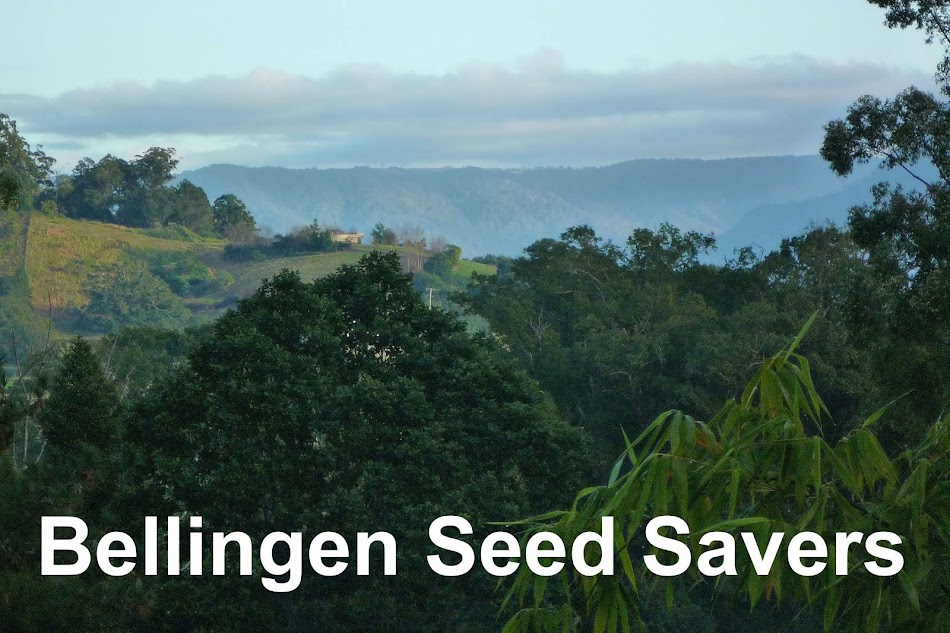This recipe uses local plants and spices. If you like a hot sambal add more chili.
Ingredients:
- One clove of perennial garlic
- Quarter of a hot chili
- A good handful of small red perennial capsicums or use a large capsicum
- 1/4 teaspoon dried nutmeg powder
- 1 onion, preferably mild, peeled and chopped
- 1 teaspoon salt
- 1 1/2 teaspoons- chopped palm sugar
- dash of coconut oil. Coconut oil adds flavour. Don't use olive oil
- 2 Curry Tree leaf bunches
- 2 Lemongrass stems, bruised
- 1 cm Galangal, peeled and sliced. Fresh ginger could substitute.
- 2 tablespoons Tamarind paste or substitute lime juice
- 2 tablespoons salt
Directions
1. Combine first seven ingredients and grind or blend finely. If you are not bothered by a more fibrous sambal you can also blend the lemon grass and galangal added in the next step.
2. Heat oil and saute ground ingredients together with curry tree leaves, lemon grass and galangal, stirring until the mixture changes colour. Add tamarind juice and simmer for another minute, then leave to cool.
3. Remove curry tree leaves, lemon grass and galangal before serving.
4. It will last at least a week in the refridgerator. I use a large dollop to stir-fry climbing or bush beans but use to stir-fry any suitable vegetables such as baby chokoes.
This recipe was an adaptation of an asian recipe. You can experiment and vary the ingredients to taste.
 |
| Perennial Garlic at the reshooting stage |
 |
| Perennial Capsicum, small but prolific |
 |
| Lemon Grass |
 |
| Rocoto Tree Chili - very hot |
 |
| Galangal |
- One clove of perennial garlic
- Quarter of a hot chili
- A good handful of small red perennial capsicums or use a large capsicum
- 1/4 teaspoon dried nutmeg powder
- 1 onion, preferably mild, peeled and chopped
- 1 teaspoon salt
- 1 1/2 teaspoons- chopped palm sugar
- dash of coconut oil. Coconut oil adds flavour. Don't use olive oil
- 2 Curry Tree leaf bunches
- 2 Lemongrass stems, bruised
- 1 cm Galangal, peeled and sliced. Fresh ginger could substitute.
- 2 tablespoons Tamarind paste or substitute lime juice
- 2 tablespoons salt
Directions
1. Combine first seven ingredients and grind or blend finely. If you are not bothered by a more fibrous sambal you can also blend the lemon grass and galangal added in the next step.
2. Heat oil and saute ground ingredients together with curry tree leaves, lemon grass and galangal, stirring until the mixture changes colour. Add tamarind juice and simmer for another minute, then leave to cool.
3. Remove curry tree leaves, lemon grass and galangal before serving.
4. It will last at least a week in the refridgerator. I use a large dollop to stir-fry climbing or bush beans but use to stir-fry any suitable vegetables such as baby chokoes.
This recipe was an adaptation of an asian recipe. You can experiment and vary the ingredients to taste.




































